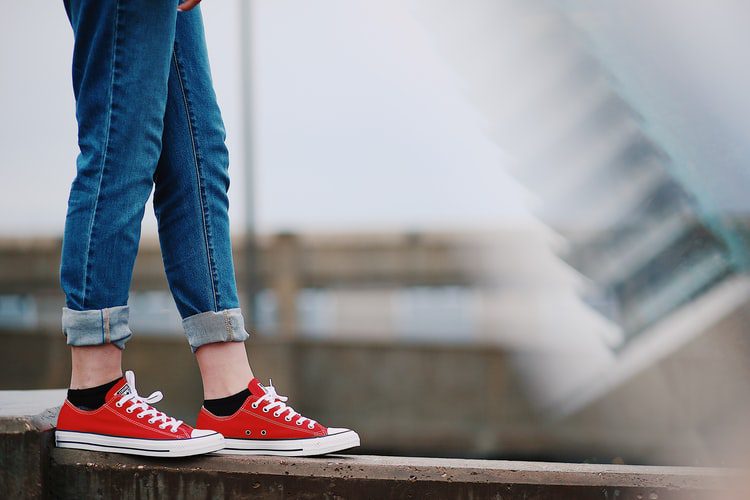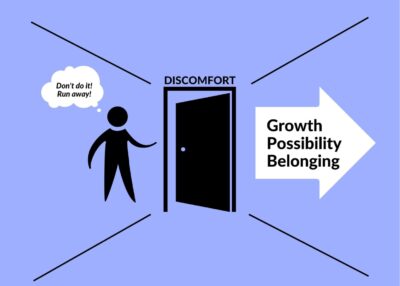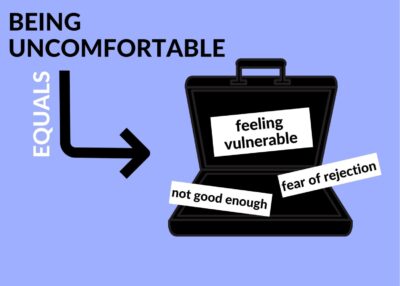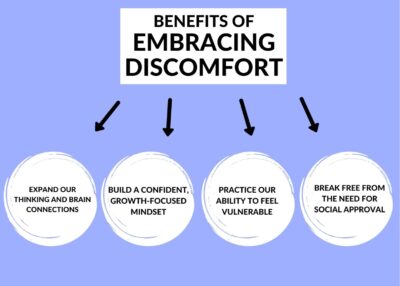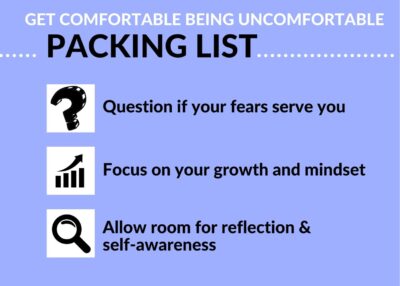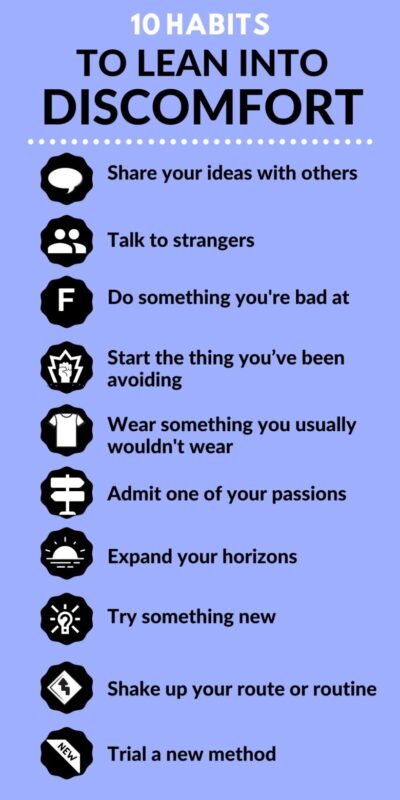[fusion_builder_container hundred_percent=”no” hundred_percent_height=”no” hundred_percent_height_scroll=”no” hundred_percent_height_center_content=”yes” equal_height_columns=”no” hide_on_mobile=”small-visibility,medium-visibility,large-visibility” status=”published” class=”@media only screen and ( min-width: 800px ) {padding-top: 0px; padding-right: 5px; padding-bottom: 0px; padding-left: 5px; }” background_position=”center center” background_repeat=”no-repeat” fade=”no” background_parallax=”none” enable_mobile=”no” parallax_speed=”0.3″ video_aspect_ratio=”16:9″ video_loop=”yes” video_mute=”yes” border_style=”solid” padding_right=”%” padding_left=”7%” admin_label=”Large Screen text” flex_column_spacing=”0px” type=”legacy”][fusion_builder_row][fusion_builder_column type=”1_1″ layout=”1_1″ spacing=”” center_content=”no” link=”” target=”_self” min_height=”” hide_on_mobile=”small-visibility,medium-visibility,large-visibility” class=”” id=”” background_color=”” background_image=”” background_image_id=”” background_position=”left top” background_repeat=”no-repeat” hover_type=”none” border_color=”” border_style=”solid” border_position=”all” border_radius=”” box_shadow=”no” dimension_box_shadow=”” box_shadow_blur=”0″ box_shadow_spread=”0″ box_shadow_color=”” box_shadow_style=”” padding_top=”” padding_right=”” padding_bottom=”” padding_left=”0px” margin_top=”” margin_bottom=”” animation_type=”” animation_direction=”left” animation_speed=”0.3″ animation_offset=”” last=”true” first=”true” border_sizes_top=”0px” border_sizes_bottom=”0px” border_sizes_left=”0px” border_sizes_right=”0px” type=”1_1″][fusion_text columns=”” column_min_width=”” column_spacing=”” rule_style=”default” rule_size=”” rule_color=”” content_alignment_medium=”” content_alignment_small=”” content_alignment=”” hide_on_mobile=”small-visibility,medium-visibility,large-visibility” sticky_display=”normal,sticky” class=”” id=”” font_size=”” fusion_font_family_text_font=”” fusion_font_variant_text_font=”” line_height=”” letter_spacing=”” text_color=”” animation_type=”” animation_direction=”left” animation_speed=”0.3″ animation_offset=””]
How can you get comfortable being uncomfortable? Why should you lean into discomfort?
A few months ago, I had to send an important email to my colleagues. But I didn’t want to. I knew I needed to send my feedback to a committee, but personal anxieties and insecurities held me back. What if they thought everything I wrote was stupid and unprofessional? The thought of hitting “send” made me uncomfortable.
And so, the email draft sat in my inbox for a week.
Eventually, I mustered up the courage to click “send.” And it mostly turned out fine. I survived the follow-up and ensuing results (and my Gmail survived, too, thank goodness).
A similar situation happened a few weeks later. This second time around, I only sat on my email draft for a couple of days. Remember the first time, I told myself. The memory motivated me to lean into discomfort and send it sooner.
Now, I can share my opinion more freely. The moment before “send” still feels uncomfortable, no doubt. But I can get comfortable with being uncomfortable – at least long enough to follow through with the actions I want to take.
.
We All Experience Being Uncomfortable Regularly in our Lives: Lean Into Discomfort
This story is not unique to me. We all experience being uncomfortable, whether sending an email, talking to a crush, or trying something new.
Our lives are full of moments that force us to lean into discomfort if we want to proceed. Those moments when everything in your body screams, “Don’t do it! Run away!” even though you want or need to take charge of your actions.
If you look around and find someone who doesn’t seem uncomfortable, don’t be fooled. This person has things that make them uncomfortable. Their triggers might not be the same as yours.
They also might have learned how to get comfortable being uncomfortable.
Fortunately, you can too.
.
What Does “Being Uncomfortable” Mean, Anyway? (How to get comfortable being uncomfortable)
Another word for being “uncomfortable” is feeling vulnerable. Feeling vulnerable is when we take an emotional risk, despite not knowing what the outcome will be. This emotional risk doesn’t need to be an outpouring of emotions. Quite the contrary, we take a risk every time we present our authentic selves to other people. (Things like sharing what we think, how we feel, and what we care about, to name a few.)
When we speak up or share, we’re not sure if we’ll be accepted or rejected. It’s this fear of rejection that sends our uncomfortable, anxious feelings into overdrive. Humans are social creatures; in evolutionary times, we relied on belonging to survive. This reliance hasn’t gone away. Instead, it’s merely adapted to our modern world.
.
Any time you experience being uncomfortable, you are most likely afraid of rejection.
I want you to consider what makes you feel uncomfortable or awkward. Try to look past your emotions (which are pretty blinding in their own right) and find the reason behind your feelings.
- Are you afraid of what people think?
- Do you feel fear that you’ll be rejected?
- Are you worried about not being good enough?
More often than not, you’ll find that being uncomfortable is tied to underlying fear.
Our fear of rejection often teams up with our fear of uncertainty. (It’s like a fear-filled supervillain team.) We crave certainty and comfort because we know what that looks like for us. Doing new things or taking emotional risks? Yikes – it’s like we’re asking for rejection and suffering!
Don’t feel bad about these thoughts. They’re entirely natural; sometimes, being uncomfortable can be healthy and positive. It’s okay to listen to your fears and misgivings.
You just need to be able to talk back to your fears when appropriate. Sometimes, you need to lean into discomfort and lean into your fears rather than avoid them.
.
Why It’s Important to Get Comfortable Being Uncomfortable
Imagine doing the same thing every single day. You take the same route to work, complete the same job, talk to the same people, eat the same thing for dinner, and watch the same TV channel. Your consistency leaves you feeling safe and comfortable.
But doesn’t it sound boring? And, eventually, don’t you think you’d start feeling a loss of meaning in the monotony?
As much as we think we crave predictability, we actually flourish with novelty. Our brains light up when faced with new information or experiences. It’s when we are challenged that we grow the most and invite more meaning to our lives.
We must learn to get comfortable being uncomfortable if we want to bring more meaning, purpose, and growth in our lives. That’s because we engage more fully in the self-discovery process, learning to trust ourselves more than other people.
.
Benefits of Leaning Into your Fears and Embracing Discomfort in your Life:
When we lean into discomfort and faces our fears, we:
-
Create more neural connections in our brain and expand our thinking
Our brains receive enormous quantities of information every day. To handle this overload, they create schemas to “categorize” info. (Think of it like the most extensive filing system you’ve ever seen.) These categories become more solidified over time. Bringing in new experiences keeps our brain synapses firing away. When we lean into discomfort, we allow our brains to make more neural connections and expand our thinking.
-
Build a confident, growth-focused mindset
Think about how a job interview works. You know employers look at your past experiences to determine if you’re qualified. We all perform a similar evaluation process of ourselves every day. When faced with a challenge, we look at our life experiences to determine if we think we’re qualified to handle them or not. Unfortunately, many of us don’t “feel good enough” and hold ourselves back. The more you know how to get comfortable being uncomfortable, the more you can build your confidence. Then, you will view challenges as opportunities rather than setbacks.
-
Practice our ability to feel vulnerable
We don’t like to feel vulnerable. It makes us feel small, scared, and alone. (Not to mention our society falsely labels vulnerability as a weakness.) But being emotionally vulnerable has numerous benefits, including more meaningful relationships, increased self-worth, and overall happier lives. When we lean into discomfort and learn how to get comfortable being uncomfortable, we build our “vulnerability” muscle. Feeling vulnerable won’t necessarily go away, but it’ll begin to get more comfortable.
-
Break free from the need for social approval
I don’t care how confident you are; we all crave a need for social approval. Humans are wired to assess social hierarchy and seek out belonging. Unfortunately, many of us mistake “fitting in” with true belonging. As a result, we shy away from being uncomfortable or facing rejection. When we practice getting comfortable being uncomfortable, we begin to shed the need for social approval. We learn that we can be our authentic selves instead of having our lives ruled by other people’s thinking.
Ultimately, leaning into discomfort is how we grow. Whether it be the growth of our brain, mindset, vulnerability, or self-sufficiency, it won’t happen unless we get comfortable being uncomfortable.
If you want to be inspired, watch writer and activist Luvvi Ajayi’s Ted Talk “Get Comfortable with Being Uncomfortable.”
.
Key Principles to Keep in Mind as You Get Comfortable Being Uncomfortable
Leaning into discomfort does not need to be through exciting, death-defying action. (In fact, I’d encourage against it – I’m not liable for this, am I?!) Remember, our fears are there to protect us. We just need to identify when they’re doing more harm than good.
The first principle for how to get comfortable being uncomfortable is to question if your fears serve you. If they don’t serve you, you must learn to push past them.
For example, I might feel uncomfortable standing on the edge of a 200-foot cliff during a hurricane. This fear sounds valid and one I should probably listen to. It serves me well to be afraid of the situation.
Now let’s consider when I’m afraid to speak up to my friends about something I believe in. I’m afraid they won’t accept my beliefs, even though I’m passionate about them. This fear, while very real, doesn’t serve me or my life. I need to push past it to live my best life.
Another key principle is to focus on your mindset and growth.
Being uncomfortable for the sake of being uncomfortable won’t do much for you. It’d be like cooking a glorious meal only to throw it in the trash. Leaning into discomfort is about growth, and you must remind yourself of this fact.
When faced with being comfortable, tap into your motivation for doing it. What reasons do you have to care about it? How will this experience serve your core values?
Ultimately, you focus your mindset on the question: How will this experience help me grow?
Finally, as you learn how to get comfortable being uncomfortable, allow room for reflection and self-awareness.
You might not experience the benefits of leaning into your fears right away. Sometimes you might even feel a wave of negative emotional backlash known as a vulnerability hangover. (I know, it sounds so appealing, right?)
You must allow room for reflection. When you take the time to step back and look at what you gained, you can develop your self-awareness and begin seeing the growth you made. Reflection will give meaning to your moments of discomfort that you might not be able to see in the present.
Have I convinced you yet of the importance of getting comfortable being uncomfortable? If so, check out the ten habits below to practice leaning into your fears and embracing discomfort.
.
10 Habits to Get Comfortable Being Uncomfortable and Lean Into Discomfort in Your Life
-
Share your ideas with others
How often do you hold back a thought or idea because you’re afraid of being judged? When we do this, we avoid discomfort by avoiding a reaction altogether. Force yourself to start sharing your ideas more, especially ideas that you care about. If it’s a struggle for you, start with people you trust. Sharing might feel uncomfortable at first, but you’ll start to see how much it will benefit your life over time.
-
Talk to strangers
Some of us have no problem talking with strangers, and some of us… hate it. Regardless, it gives us all an opportunity to be more authentic. Challenge yourself to talk to strangers in a vulnerable way. This vulnerability doesn’t mean you should expose all your deepest secrets (or fall into other myths surrounding vulnerability). Instead, merely work to choose truth over what someone might think.
-
Do something you’re bad at
Ah, the queen of being uncomfortable – looking foolish! We hate doing things we’re bad at. That’s why you must practice it. Try picking up a new hobby, searching for a “how-to” on Youtube, or joining a new league. If you’re not ready for the public stage, pick something up in your own home. Even being alone in our discomfort will teach us that we can handle being imperfect at something.
-
Start the thing you’ve been avoiding.
Have you been procrastinating with something you want or need to do? Your discomfort won’t go away by avoiding it. Fight against your fear (which is probably not serving you) and embrace the discomfort. If you start feeling anxious, remind yourself why it’s important and how it will help you grow.
-
Wear something you usually wouldn’t wear
As we talk about self-growth and vulnerability, it might seem odd to mention clothing. However, your outfit choices provide an excellent opportunity to lean into discomfort. What we wear is often the first thing people notice about us. (In addition, of course, to aspects of our identity like race and gender.) Try wearing something you wouldn’t normally wear. Perhaps you can dress it up, dress down, or go with a “louder” shirt. As you go about your day, you might find that you become less uncomfortable as time goes on.
-
Admit one of your passions
It feels vulnerable to admit our passions because it means we care about something. (And, if you’ve watched any cliched superhero movie, you know caring is the last thing our damaged heroes need.) Unfortunately, when we keep our passions to ourselves, we also limit the meaning and purpose they can bring to our lives. Admit one of your passions to a friend, partner, or colleague. If they don’t accept it, you’ll survive. More than likely, they’ll support you in your pursuits, and you’ll feel more inspired than ever.
-
Expand your horizons
Consider how you developed your world view. (I know, casual question, right?) Who did you learn from? What did your culture teach you? We like to reside in what we know; it makes us feel safe and comfortable. To learn to get comfortable being uncomfortable, work to expand your horizons. Maybe it’s watching a documentary or reading a book about a different culture. Leaning into your fears doesn’t always have to put you physically in a place. Challenging your long-held beliefs and thoughts can be transformative in its own right.
-
Try something new
Remember, our brains crave novelty. New experiences keep our brains fresh in their development and connections. Try something new – anything. This “new” experience doesn’t need to be a lifetime commitment. It might be as simple as drawing a cartoon, signing up for a new fitness class, or exploring a new location. Get comfortable being uncomfortable and not knowing every single aspect of your new experience.
-
Shake up your route or routine
An easy way to incorporate newness into your life is to change up your route or routine. Do you always follow the same route on your way to work? Add a new turn; a few extra minutes can open you up to many new experiences. If you can’t shake up your transportation, consider shaking up your daily routine. What if you switched the order of your habits? Or incorporated a tiny habit? Any novelty will help teach your brain that you can handle being uncomfortable.
-
Trial a new method
We often develop a method of doing things and then never change it. Over time, these methods become ingrained in our brain wiring. They also feel comfortable. Get comfortable being uncomfortable by trialing a new method. Consider questions like, Can this be done a different way? How can I alter what I’m doing? What other methods would achieve the same result? Keep in mind – it’s called trial and error for a reason. You’re not marrying the new method. Instead, you’re practicing how to get comfortable being uncomfortable.
[/fusion_text][fusion_code]PGlmcmFtZSBpZD0iaW50ZXJhY3RBcHA1ZmI2ZGY1YmNmNTE4ZTAwMTY3NjE5MDgiIHdpZHRoPSI4MDAiIGhlaWdodD0iODAwIiBzdHlsZT0iYm9yZGVyOm5vbmU7bWF4LXdpZHRoOjEwMCU7bWFyZ2luOjA7IiBhbGxvd1RyYW5zcGFyZW5jeT0idHJ1ZSIgZnJhbWVib3JkZXI9IjAiIHNyYz0iaHR0cHM6Ly9xdWl6LnRyeWludGVyYWN0LmNvbS8jLzVmYjZkZjViY2Y1MThlMDAxNjc2MTkwOC9xLzE/bWV0aG9kPWlmcmFtZSI+PC9pZnJhbWU+[/fusion_code][fusion_text columns=”” column_min_width=”” column_spacing=”” rule_style=”default” rule_size=”” rule_color=”” content_alignment_medium=”” content_alignment_small=”” content_alignment=”” hide_on_mobile=”small-visibility,medium-visibility,large-visibility” sticky_display=”normal,sticky” class=”” id=”” font_size=”” fusion_font_family_text_font=”” fusion_font_variant_text_font=”” line_height=”” letter_spacing=”” text_color=”” animation_type=”” animation_direction=”left” animation_speed=”0.3″ animation_offset=””]
Conclusion: Lean Into Discomfort and Get Comfortable Being Uncomfortable
As humans, we don’t like to experience discomfort. Our fear of rejection and fear of uncertainty often hold us back from doing new things and living more authentic lives. While we can’t eliminate these fears, you need to lean into your fears and embrace discomfort in your life.
It takes practice to get comfortable being uncomfortable. However, the more you do it, the more natural it will be for you to put yourself out there. Not only will this help you make more neural connections, but it will help you live a more profound, richer life.
Ten habits to get comfortable being uncomfortable include:
- Share your ideas with others
- Talk to strangers
- Do something you’re bad at
- Start the thing you’ve been avoiding
- Wear something you usually wouldn’t wear
- Admit one of your passions
- Expand your horizons
- Try something new
- Shake up your route or routine
- Trial a new method
Leaning into discomfort isn’t just helpful. It’s necessary if you want to live a meaningful life.
[/fusion_text][/fusion_builder_column][/fusion_builder_row][/fusion_builder_container][fusion_global id=”3654″][fusion_builder_container admin_label=”Large Screen follow-up” hundred_percent=”no” hundred_percent_height=”no” hundred_percent_height_scroll=”no” hundred_percent_height_center_content=”yes” equal_height_columns=”no” hide_on_mobile=”small-visibility,medium-visibility,large-visibility” status=”published” border_style=”solid” padding_right=”25″ padding_left=”25″ gradient_start_position=”0″ gradient_end_position=”100″ gradient_type=”linear” radial_direction=”center center” linear_angle=”180″ background_color=”#000000″ background_position=”center center” background_repeat=”no-repeat” fade=”no” background_parallax=”none” enable_mobile=”no” parallax_speed=”0.3″ background_blend_mode=”none” video_aspect_ratio=”16:9″ video_loop=”yes” video_mute=”yes” filter_hue=”0″ filter_saturation=”100″ filter_brightness=”100″ filter_contrast=”100″ filter_invert=”0″ filter_sepia=”0″ filter_opacity=”100″ filter_blur=”0″ filter_hue_hover=”0″ filter_saturation_hover=”100″ filter_brightness_hover=”100″ filter_contrast_hover=”100″ filter_invert_hover=”0″ filter_sepia_hover=”0″ filter_opacity_hover=”100″ filter_blur_hover=”0″ border_sizes_top=”0px” border_sizes_bottom=”0px” border_sizes_left=”0px” border_sizes_right=”0px” type=”legacy”][fusion_builder_row][fusion_builder_column type=”1_1″ layout=”1_1″ spacing=”” center_content=”no” link=”” target=”_self” min_height=”” hide_on_mobile=”small-visibility,medium-visibility,large-visibility” class=”” id=”” background_color=”” background_image=”” background_image_id=”” background_position=”left top” background_repeat=”no-repeat” hover_type=”none” border_color=”” border_style=”solid” border_position=”all” border_radius=”” box_shadow=”no” dimension_box_shadow=”” box_shadow_blur=”0″ box_shadow_spread=”0″ box_shadow_color=”” box_shadow_style=”” padding_top=”” padding_right=”” padding_bottom=”” padding_left=”” margin_top=”” margin_bottom=”” animation_type=”” animation_direction=”left” animation_speed=”0.3″ animation_offset=”” last=”true” first=”true” border_sizes_top=”0px” border_sizes_bottom=”0px” border_sizes_left=”0px” border_sizes_right=”0px” type=”1_1″][fusion_title hide_on_mobile=”small-visibility,medium-visibility,large-visibility” class=”” id=”” content_align=”center” size=”1″ font_size=”” line_height=”” letter_spacing=”3px” margin_top=”5px” margin_bottom=”-40px” margin_top_mobile=”” margin_bottom_mobile=”” text_color=”#ffffff” style_type=”double solid” sep_color=”#0220ff” margin_top_small=”” margin_bottom_small=””]
FOLLOW-UP QUESTIONS
[/fusion_title][fusion_text columns=”” column_min_width=”” column_spacing=”” rule_style=”default” rule_size=”” rule_color=”” hide_on_mobile=”small-visibility,medium-visibility,large-visibility” class=”” id=””]
Comment below with answers, ideas, and more questions, or contact me to collaborate on a future post!
[/fusion_text][fusion_builder_row_inner][fusion_builder_column_inner type=”1_2″ layout=”1_2″ spacing=”” center_content=”no” hover_type=”none” link=”” target=”_self” min_height=”” hide_on_mobile=”small-visibility,medium-visibility,large-visibility” class=”” id=”” background_color=”” background_image=”” background_position=”left top” background_repeat=”no-repeat” border_color=”” border_style=”solid” border_position=”all” border_radius=”” box_shadow=”no” dimension_box_shadow=”” box_shadow_blur=”0″ box_shadow_spread=”0″ box_shadow_color=”” box_shadow_style=”” padding_top=”” padding_right=”” padding_bottom=”” padding_left=”” dimension_margin=”” animation_type=”” animation_direction=”left” animation_speed=”0.3″ animation_offset=”” last=”false” first=”true” border_sizes_top=”0px” border_sizes_bottom=”0px” border_sizes_left=”0px” border_sizes_right=”0px” spacing_right=”” type=”1_2″][fusion_title hide_on_mobile=”small-visibility,medium-visibility,large-visibility” class=”” id=”” content_align=”center” size=”4″ font_size=”30px” line_height=”” letter_spacing=”1px” margin_top=”” margin_bottom=”-10px” margin_top_mobile=”” margin_bottom_mobile=”-10px” text_color=”#ffffff” style_type=”single dashed” sep_color=”#022cff” margin_top_small=”” margin_bottom_small=”-10px”]
EXPLORING YOURSELF
[/fusion_title][fusion_checklist icon=”fa-question-circle fas” iconcolor=”#0216f2″ circle=”no” circlecolor=”#e0e0e0″ size=”18px” divider=”yes” divider_color=”#ffffff” hide_on_mobile=”small-visibility,medium-visibility,large-visibility”][fusion_li_item icon=””]
When have you felt most uncomfortable?
[/fusion_li_item][fusion_li_item icon=””]
How afraid are you of uncertain?
[/fusion_li_item][fusion_li_item icon=””]
What is something new you’ve been too afraid to try?
[/fusion_li_item][/fusion_checklist][/fusion_builder_column_inner][fusion_builder_column_inner type=”1_2″ layout=”1_2″ spacing=”” center_content=”no” hover_type=”none” link=”” target=”_self” min_height=”” hide_on_mobile=”small-visibility,medium-visibility,large-visibility” class=”” id=”” background_color=”” background_image=”” background_position=”left top” background_repeat=”no-repeat” border_color=”” border_style=”solid” border_position=”all” border_radius=”” box_shadow=”no” dimension_box_shadow=”” box_shadow_blur=”0″ box_shadow_spread=”0″ box_shadow_color=”” box_shadow_style=”” padding_top=”” padding_right=”” padding_bottom=”” padding_left=”” dimension_margin=”” animation_type=”” animation_direction=”left” animation_speed=”0.3″ animation_offset=”” last=”true” first=”false” border_sizes_top=”0px” border_sizes_bottom=”0px” border_sizes_left=”0px” border_sizes_right=”0px” type=”1_2″][fusion_title hide_on_mobile=”small-visibility,medium-visibility,large-visibility” class=”” id=”” content_align=”center” size=”4″ font_size=”30px” line_height=”” letter_spacing=”1px” margin_top=”” margin_bottom=”-10px” margin_top_mobile=”” margin_bottom_mobile=”-10px” text_color=”#ffffff” style_type=”single dashed” sep_color=”#0220ff” margin_top_small=”” margin_bottom_small=”-10px”]
EXPANDING YOUR WORLD
[/fusion_title][fusion_checklist icon=”fa-question-circle fas” iconcolor=”#0216f2″ circle=”no” circlecolor=”#ffffff” size=”18px” divider=”yes” divider_color=”#ffffff” hide_on_mobile=”small-visibility,medium-visibility,large-visibility”][fusion_li_item icon=””]
Why is a fear of uncertainty so ingrained in humans?
[/fusion_li_item][fusion_li_item icon=””]
How can we teach discomfort as a positive?
[/fusion_li_item][fusion_li_item icon=””]
What will it take to spark a “vulnerability” revolution?
[/fusion_li_item][/fusion_checklist][/fusion_builder_column_inner][/fusion_builder_row_inner][/fusion_builder_column][/fusion_builder_row][/fusion_builder_container]

